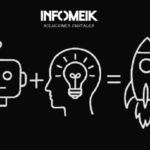The Center for Financial Studies (CEF) recalls that the use of Linkedin goes far beyond mere contact with other professionals in the network: we need to tell others what we do and what we are looking for. Therefore, in order to extract the maximum out of this platform for professional collaboration, CEF offers ten tips on how to use Linkedin effectively, both oriented to the search of employment as to do business.
These are:
Strategy. Before you start using the platform you have to have a defined strategy: what are we looking for: job search, clients, contacts for our company abroad, etc.?
Routine. It is important to look for times in the day to review our Linkedin and update it, add new contacts, etc.Also, from CEF indicate that it is advisable to create an email account exclusively for social networks.
Profile. Do not forget to complete the profile in its entirety. It is necessary to include a photograph and intended for a professional environment (they are not worth the one we would put on another type of social network). In addition, the excerpt section should be filled in with a professional summary and a brief mention of our objectives. CEF says it’s good to include an email and a contact phone.
Recommendations are also important. At least we have to have two or three in our profile. That these come from key people (e.g. former bosses) is a good strategy. We can also use the presentation area to attach any document, image or video showing our product or activities.
Holder. When we identify ourselves as professionals, we must be careful about anglicisms and long and cumbersome titles. Don’t forget that Linkedin searches work with keywords and that what we are looking for in Linkedin is to be found, especially if we are looking for work. In this case, we also need to add ‘active job search’ to our professional title.
Search. Once we have made the profile, we must look for those people we want to hire or those we think may be interested in our product or profile. It is advisable to use the “Advanced Search” for this.
Group. In Linkedin we can create groups of like-minded people or look for some already existing ones. This will allow us to establish direct contact with the people in those groups.
Communicate. We must not reduce the use of this social network to contact, but, as we said before, we must also communicate, tell others what we are doing and what we are looking for. It is interesting to have prepared small text-template in which we indicate in a few lines what we are dedicated to and what we expect from our interlocutor.
Treatment. Education must be maintained, Of course, but Linkedin allows us to set aside the overly formal type treatments (“dear Sr/Ms”, etc.). We have to keep in mind we are communicating directly with the person, so a “Hello” along with the name is enough when we address someone.
Independence. It is not advisable to use Linkedin linked to accounts on other social networks such as Twitter or Facebook. Why? Because the first presents the limitation of 140 characters, while the second moves more in the personal sphere. On the contrary, Linkedin develops in the professional field and has its own codes and forms of expression, very different from the previous two.
Anticipatory. Do not expect to stay without a job to start to work up a professional network. We must anticipate this because it is an asset that will always accompany us throughout our professional life.
Source: http://www.abc.es/tecnologia/redes/20130418/abci-exprime-perfil-linkedin-201304172136.html


 Español
Español

